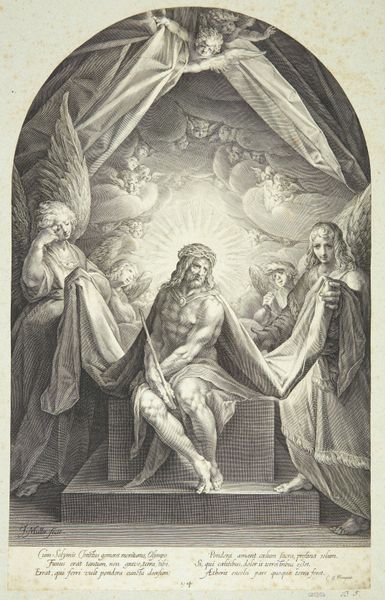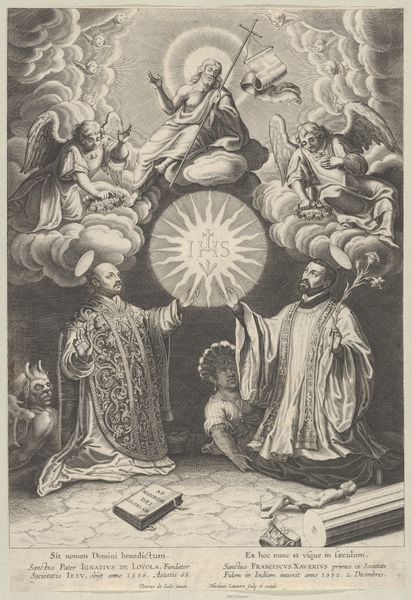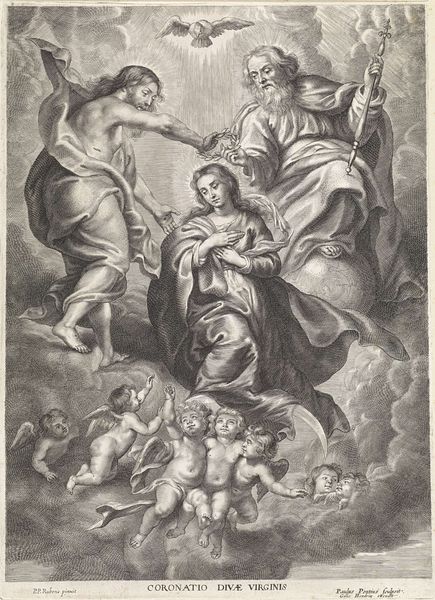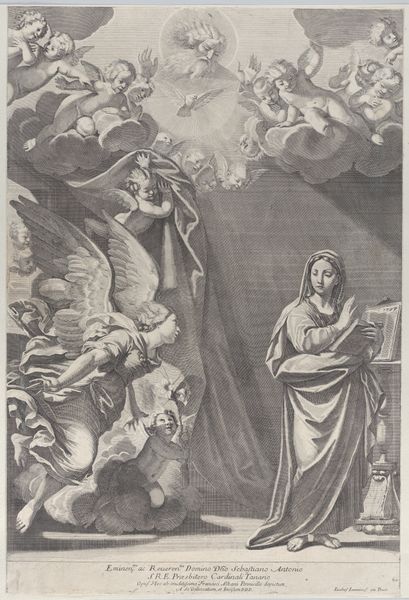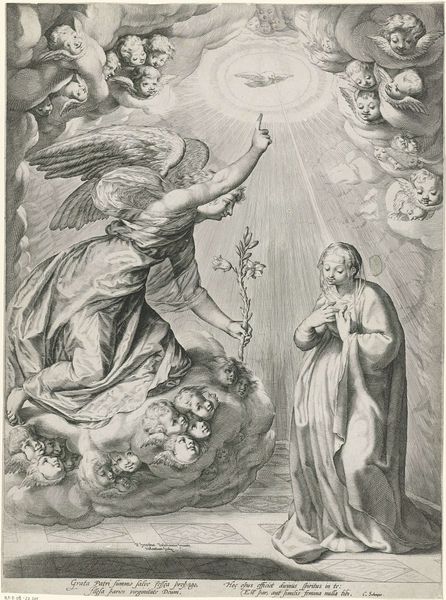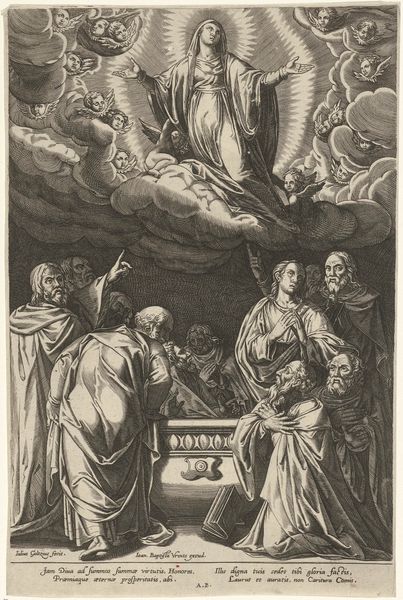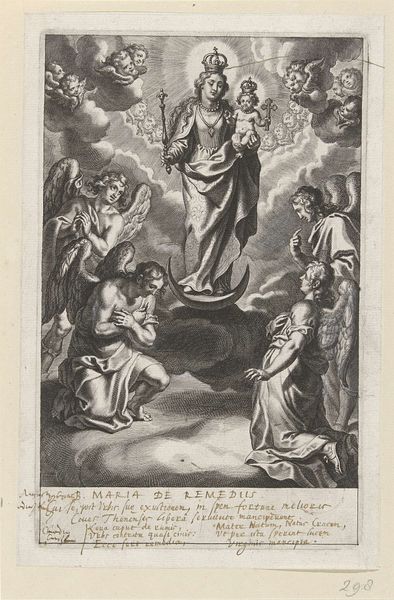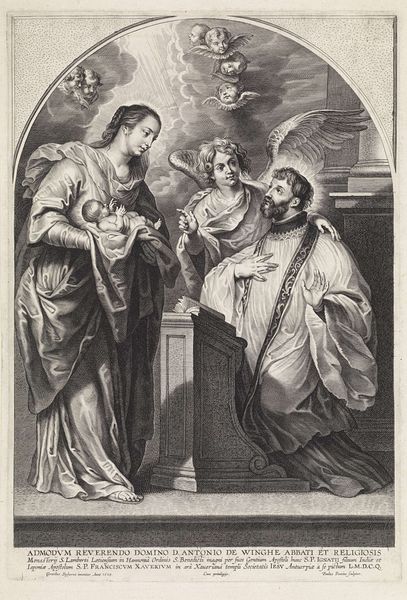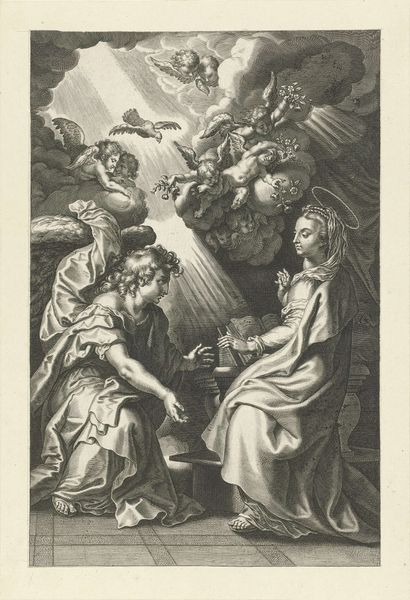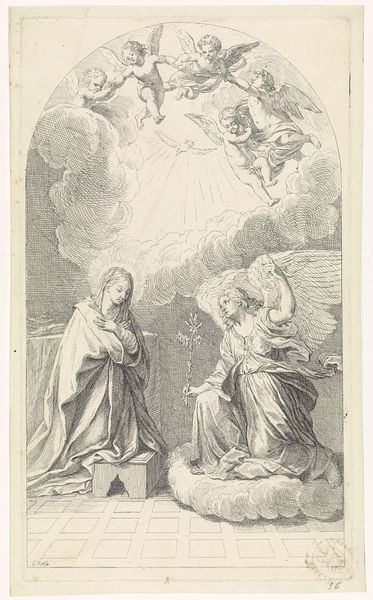
print, engraving
#
portrait
#
baroque
# print
#
old engraving style
#
figuration
#
historical photography
#
line
#
history-painting
#
engraving
Dimensions: height 451 mm, width 384 mm
Copyright: Rijks Museum: Open Domain
Curator: Ah, here we have Gérard Edelinck’s "The Holy Family," created somewhere between 1666 and 1707. It’s an engraving, currently residing here at the Rijksmuseum. Editor: My first thought? The light—the sheer, blinding light emanating from...everywhere. Is it supposed to be comforting, or am I about to spontaneously combust? Curator: Well, Edelinck was a master of Baroque engraving, known for his incredible detail. Note the precise lines used to create texture and depth. The almost photographic realism achieved solely through etching, pretty radical don't you think? Editor: True, you can see the artist's hand, but consider the context: Edelinck and others produced many such prints; what material conditions supported that production? The kind of acid and tools used, but also the time required. These materials connect to socio-economic considerations of labor and privilege. Curator: Yes, the means of production are always important! But, for me, it's all about the emotion he captures. Look at Mary’s downcast eyes, Joseph's protective hand... Editor: Joseph looks constipated! But beyond the individual portrayed, you must appreciate how materials and techniques enable the message and its dissemination: each print facilitates its replication and broad consumption; such factors dictate symbolic power. Curator: Okay, okay, but even from a purely aesthetic view the medium, engraving, brings an airiness that works perfectly. It isn’t quite painting. It allows some ambiguity—this holy image, accessible to many. A message both grounded in the real, via line and form, and open to ethereal interpretation through its airy medium and skillful line-work. Editor: And consider how this "accessibility" shapes Baroque artistry itself! Engraving requires precision tools; widespread adoption signals standardization. Ultimately, aesthetics rely upon practical support for artistry. Curator: Still, it's lovely to reflect on those older times: faith made so vividly present, literally materialized onto copper and then transferred to paper. It certainly invites pondering. Editor: It encourages us to consider the human networks behind those ethereal reflections as well. It's always the blend of spirit and structure that enthralls, I feel.
Comments
No comments
Be the first to comment and join the conversation on the ultimate creative platform.
